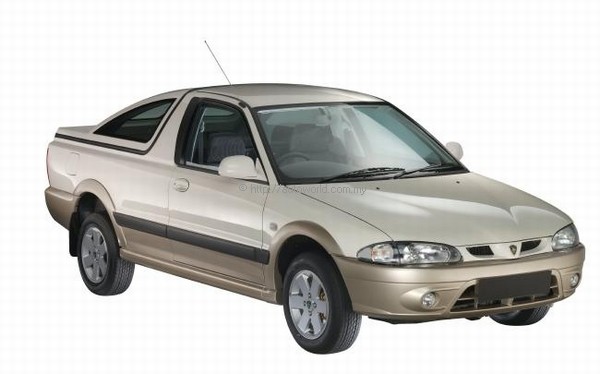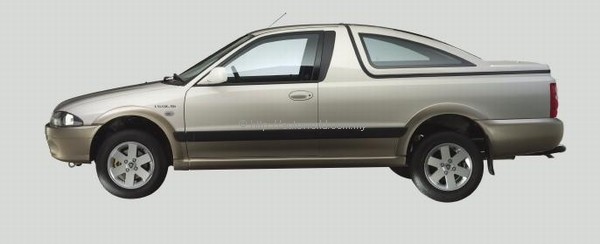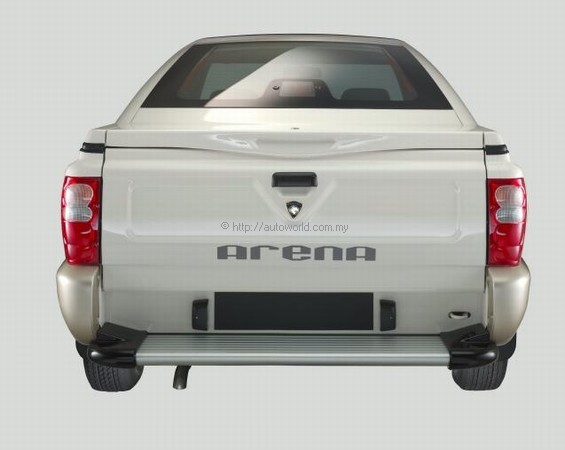First Driving Impressions: Proton Arena 1.5
OTR PRICES:
Arena Freestyle (low line) = RM37,250.21
Arena Sportdeck (Sporty Medium Line) = RM39,552.22
Arena Fastback (Sporty High Line) = RM41,332.45
A Proton pick-up? ‘No way’ was my usual response when asked about this in the past year. I had acknowledged that such a vehicle might exist in Proton’s factory as an ‘engineers’ toy’ but as a production model, it did not seem likely. I felt that someone may have spotted it – just as you will see a Wira stationwagon at ACE (the EON subsidiary which makes the stretched Protons) – on and off and started to spread rumours about it.
Well, to all those people whom I persuaded not to believe it, my apologies. I had not expected that on his visits to the pasar malam, Proton’s CEO Tengku Tan Sri (Dr) Mahaleel had been observing how people use their vehicles and had spotted a need which could be met by Proton.
“I saw many people coming in their vans and frankly, they were under-utilising those vehicles. They needed cargo space but not the kind available from a van,” he explained to me when I asked him why Proton decided to do a pick-up. “I felt that a smaller vehicle like a pick-up would be more suitable and could also be a practical runabout.”
That was what started off the M27 project – which we now know as the Arena – some three years ago although from the marketing point of view, the aim of offering the Arena is to give customers an alternative. This is especially important for the new generation of younger buyers who are not always keen on conventional-looking cars and in the Proton stable, there’s been little that is ‘different’ …. other than the Juara (and that is just a bit too different for most people, it seems!).
However, it is not a direct response to the growing interest in pick-ups which was started by Ford with its Ranger in 1999. It may seem that way because of the pick-up style but what Proton is looking at is creating a new segment in the market by providing an affordable set of wheels with a good dose of individuality by some innovative styling work. And Proton, not being a giant carmaker, can afford to exploit niches which may not offer the big volumes that the giants always need.
Three years is a rather short time to do a model (“I wanted it to be shorter than that…”, revealed Tengku Mahaleel) but it has been possible partly because the Wira platform has been used as a starting point. At the same time, a fully digital development process – from concept to prototyping – along with concurrent engineering work cut a lot of time because everything could be designed and tested ‘virtually’. It is in this area that Proton has a lot of strengths, having rapidly built up its R&D capabilities during the late 1990s.
Most people may think that the Arena is merely a Wira sedan with the rear section flattened but it is actually a bit more than that. In fact, the engineering solutions are innovative and impressive. What they did was to take the monocoque front end up to the B-pillar and mate it to a newly-developed ladder frame chassis for the back section. The crucial area is in the middle and that is why that area is thickened and the element which brings front and rear together is a carefully engineering transverse torque box.
While a monocoque structure (which is when the floorpan and body are welded as a single unit) has merits, it is not necessarily good when it comes to carrying heavy loads. This is why many commercial vehicles have the ladder-frame chassis which is basically a rectangular box frame over the axle and reinforced with cross-members. This handles loads better and for the Arena, it has enabled the load capacity to be 150 kgs greater with a Gross Vehicle Weight (GVW) of 1615 kgs. The body-in-white (which is the metal shell alone before painting) is only 17 kgs heavier than the Wira sedan’s but the kerb weight is 1045 kgs which is 65 kgs heavier.
Since they designed an entirely new rear end, the engineers also came up with a simple and functional suspension layout of a beam axle and parabolic leafsprings. The springing medium may sound old but the design of the single leafspring is actually something new and ideal for light vehicles. It provides good load-carrying capacity and yet does not have the harsh ride of conventional multileaf springs. APM is the only company that makes such springs in Malaysia and it’s becoming popular among pick-up owners. Proton is the first local pick-up manufacturer to design its suspension with such springs.
Talking about the suspension, the front remains the same as that in the Wira, ie independent MacPherson struts. However, to handle the expected higher loads and likely off-road excursions, the gas-filled dampers are stiffer and the strut itself is also longer so as to raise the vehicle another 20 mm to give 170 mm ground clearance.
Also contributing to the extra ground clearance is the use of larger wheels – 14 inches instead of the usual 13 inches used for the Wira. There are two types of wheels available for the Arena – 14×5.5J steel and 14×6.0J alloy. They are specially designed for the Arena and are reinforced. Proton says that the standard Wira wheels should therefore not be used for the Arena at all. Sime Monza tyres with a size of 175/70 are fitted as standard with a full sized spare slung under the rear deck.
continued on page 2




























